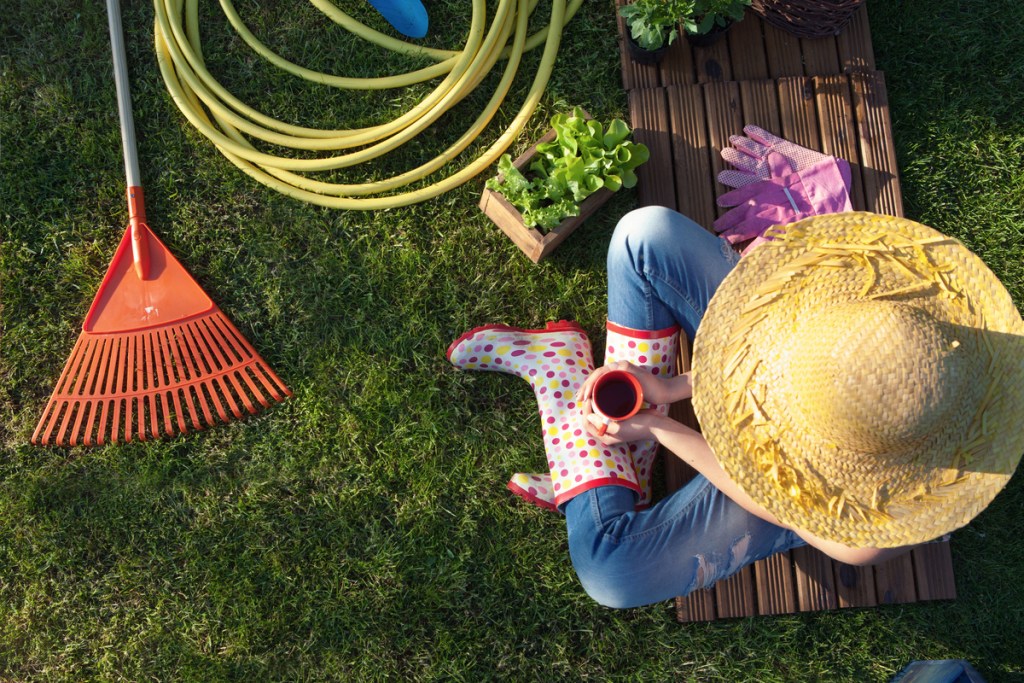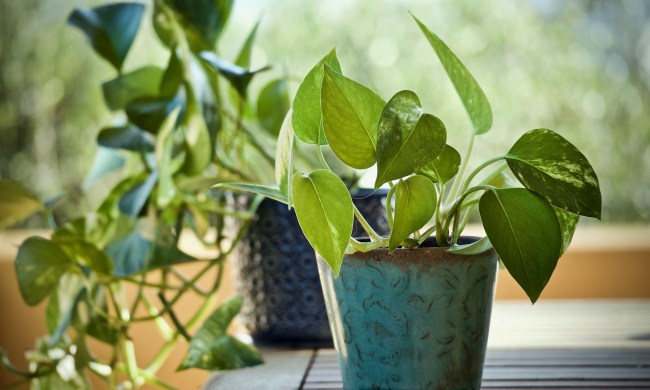Successful gardening requires an assortment of equipment. Tools may be the most difficult area to pin down because there are so many different tasks to be done. What does a gardener do to ensure they get the right products and avoid the gimmicks? Avoid the clutter trap as you plan your garden installation.
Each garden is unique, from the soil conditions to the types of plants, to the gardener’s physical ability and personal preferences. But every in-ground garden requires the same basic multi-task tools: A garden knife, spade, rake, hoe, and garden hose. Use these few tools to start any kind of garden, and then add specialized tools later on if the need arises.

Garden knife
This is one of those tools you may not think about until you need it. A good knife makes gardening much easier when it’s time to open a bag of soil, remove plant labels, and other everyday tasks. A pocket knife would work, but a hori hori is better. Not only is it an excellent cutting tool, but the unique shape and graduated measuring marks make it an excellent trowel, transplanter, cultivating tool, harvest tool, and more.
The Truly Garden Hori Hori Garden Knife comes with a leather sheath and a diamond sharpening tool to keep the blade well tuned. The thick, full-tang, 7-inch blade is made of 420 stainless-steel for tough digging and efficient cutting. It features a curved blade profile and soil depth gauge, and two cutting edges, a sharp flat edge and a serrated edge. The durable 5-inch hardwood handle is attached by steel pins and includes a protective handguard.
Spade
In the garden, a spade may be the best digging tool. The spade works well in tight spaces, is capable of precise digging, and has a thick neck that withstands leverage quite well, making it an excellent choice for breaking new ground and transplanting perennials. The flat, square edge is great for creating crisp bed edges, removing lawn grass, trenching for drainage or irrigation, and general digging.
The Fiskars 46 inch D-handle Garden Spade features a welded, 14-gauge hardened steel blade, and 18-gauge steel shaft that provide ample strength and durability for heavy-duty tasks. A powder-coated finish resists rust and makes cleanup easy. The sharpened blade easily penetrates heavy soil and cleanly slices through roots. An extra large D-handle design offers enough space for two-handed operation.
Rake
A steel bow rake is the ideal tool for smoothing out garden soil. After turning the soil with a spade this tool levels the surface, picks out rocks and debris, and breaks up small clumps. It also helps to sculpt clean natural edges on raised beds and tree rings.
The Bully Tools 16-Tine Bow Rake is made with a durable 58 inch high-strength fiberglass handle. An ergonomic cushioned grip increases user comfort and reduces hand fatigue. The welded steel tines are built with strong 10-gauge steel to break up and level hard, compacted soil or mulch.
Hoe
Many garden hoe styles are either too heavy or only do a single job. The warren hoe’s triangular head gives it a favorable strength to weight balance, and makes it useful for numerous tasks. It is an excellent weeding and cultivating tool. The unique head shape works well in tight spaces around garden plants. It can be used for deep or shallow cultivation. It also makes perfect long furrows for planting.
The Truper Tru Tough Warren Hoe is made with a 54-inch ash wood handle for strength and durability. The gray steel head is finished with a silicone clear coat for easy cleanup.

Garden hose and nozzle
Watering plants, mixing fertilizers, and cleaning tools require water. A good garden hose and nozzle will make these tasks much easier. Quality hoses resist kinking, don’t stiffen too much in cold weather, and have strong connectors. Good hose nozzles are made of durable material and have sturdy moving parts.
The Briggs and Stratton Premium Heavy Duty Garden Hose is available in 25-, 50-, 75-, and 100-foot lengths. It features crush-proof, nickel-plated brass couplings with a rubber washer for secure connections. The hose interior is reinforced for high burst strength, and the natural rubber exterior remains pliable in cold temperatures.
Take care of your tools
Quality tools are built to last, and they’ll last longest when they receive proper care. Remove dirt and debris after working in the garden. Store them out of the weather when not in use. Coat metal surfaces with a thin layer of oil to prevent rust in storage. Sand and oil wooden handles to eliminate splinters. Turn off the water supply and disconnect hoses when they are not in use. Drain standing water from hoses when freezing temperatures are imminent. With good care, these few simple tools should last for decades.



